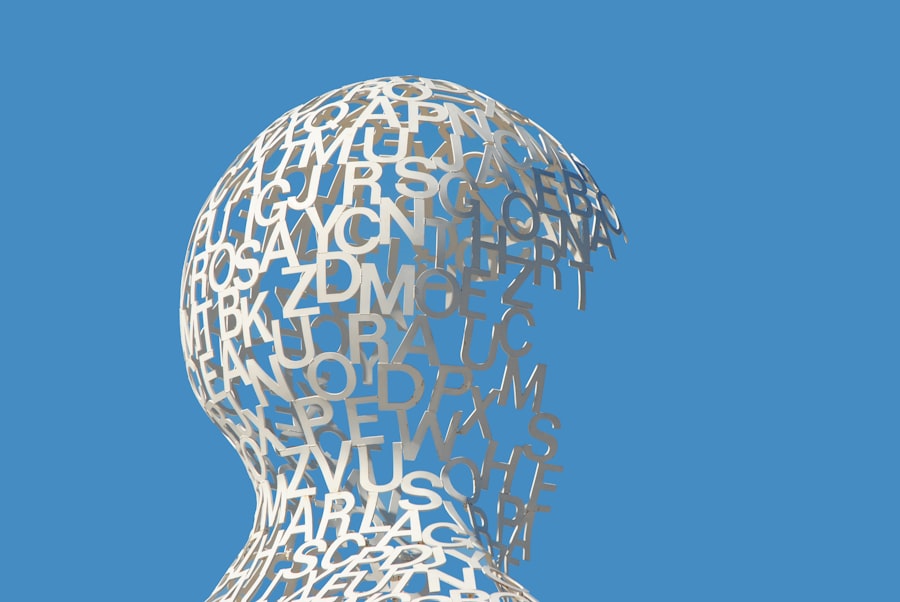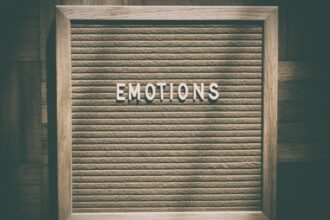Cognitive errors are systematic patterns of deviation from norm or rationality in judgment. They occur when your brain processes information in a way that leads to illogical conclusions or poor decision-making. These errors can stem from various sources, including emotional influences, social pressures, and inherent biases in your thinking processes.
Understanding cognitive errors is crucial because they can significantly impact your daily life, from personal choices to professional decisions. By recognizing these errors, you can develop strategies to mitigate their effects and enhance your decision-making capabilities. As you navigate through life, you may find yourself falling prey to these cognitive pitfalls without even realizing it.
Whether it’s overestimating your abilities or misjudging the likelihood of events, cognitive errors can cloud your judgment and lead to suboptimal outcomes. The good news is that by becoming aware of these errors, you can take proactive steps to improve your thinking and decision-making processes. This article will delve into various cognitive errors, their impacts, and strategies for overcoming them, empowering you to make more informed choices.
Key Takeaways
- Cognitive errors can significantly impact decision making
- Confirmation bias can distort thinking by favoring information that confirms preexisting beliefs
- Anchoring and adjustment heuristics can lead to biased decision making
- Availability heuristic can influence perceptions by favoring readily available information
- Overconfidence bias can be mitigated through strategies such as seeking feedback and considering alternative perspectives
- Hindsight bias can distort judgments by overestimating the predictability of past events
- Sunk cost fallacy can influence decision making by causing individuals to continue investing in a losing proposition
- Framing effects can be counteracted by reframing the decision in different contexts
- Clearer thinking strategies can be applied in daily life to mitigate the impact of cognitive errors on decision making
Understanding the Impact of Cognitive Errors on Decision Making
Cognitive errors can have profound effects on your decision-making processes. When you allow these errors to influence your thoughts, you may find yourself making choices that are not based on sound reasoning or accurate information. For instance, if you overestimate the likelihood of a negative outcome due to fear or anxiety, you might avoid taking necessary risks that could lead to personal or professional growth.
This avoidance can stifle your potential and limit your opportunities. Moreover, cognitive errors can create a feedback loop that reinforces poor decision-making. When you make a choice based on flawed reasoning, the consequences of that choice may further entrench your biases.
For example, if you consistently choose not to invest in stocks because of a past loss, you may miss out on future gains due to an irrational fear rooted in a single experience.
Identifying Common Cognitive Errors

To effectively combat cognitive errors, it is essential to identify the most common types that may affect your thinking. One prevalent error is the confirmation bias, where you tend to seek out information that supports your existing beliefs while ignoring evidence that contradicts them. This selective attention can lead to a distorted understanding of reality and hinder your ability to make balanced decisions.
Another common cognitive error is the availability heuristic, which causes you to rely on immediate examples that come to mind when evaluating a situation. For instance, if you frequently hear about airplane accidents in the news, you might overestimate the dangers of flying despite statistical evidence showing it is one of the safest modes of transportation. By recognizing these and other cognitive errors, such as overconfidence bias and anchoring effects, you can begin to challenge your thought processes and make more informed decisions.
The Role of Confirmation Bias in Distorting Thinking
| Confirmation Bias | Effect on Thinking |
|---|---|
| Seeking Information | Tendency to seek out information that confirms pre-existing beliefs |
| Interpreting Information | Interpreting information in a way that supports existing beliefs |
| Ignoring Contradictory Evidence | Tendency to ignore or dismiss evidence that contradicts existing beliefs |
| Reinforcing Beliefs | Reinforcing existing beliefs and creating a closed-minded approach |
Confirmation bias plays a significant role in distorting your thinking by creating an echo chamber of beliefs that reinforces your existing views. When you focus solely on information that aligns with what you already think, you limit your exposure to diverse perspectives and alternative solutions. This narrow-mindedness can lead to poor decision-making because it prevents you from considering all relevant factors.
To combat confirmation bias, it is essential to actively seek out opposing viewpoints and challenge your assumptions. Engage in discussions with individuals who hold different opinions and be open to changing your mind based on new evidence. By doing so, you can broaden your understanding and make more balanced decisions that take into account a wider range of information.
Overcoming the Influence of Anchoring and Adjustment Heuristics
Anchoring and adjustment heuristics can significantly skew your decision-making process by causing you to rely too heavily on initial information when making judgments. For example, if you’re negotiating a salary and the first number mentioned is significantly high or low, it can anchor your expectations and influence the final outcome. This reliance on initial figures can lead to suboptimal decisions if you’re not careful.
To overcome the influence of anchoring, it’s crucial to approach decisions with a critical mindset. Take the time to gather comprehensive information before settling on a conclusion. Consider multiple perspectives and alternative scenarios rather than fixating on the first piece of information you encounter.
By doing so, you can make more informed choices that are less susceptible to the anchoring effect.
Recognizing the Influence of Availability Heuristic on Perceptions

The availability heuristic can distort your perceptions by leading you to overestimate the likelihood of events based on how easily they come to mind. If you’ve recently heard about a natural disaster or a crime in your area, you might perceive those events as more common than they actually are. This skewed perception can influence your decisions, such as avoiding travel or making unnecessary safety precautions based on fear rather than facts.
To counteract the availability heuristic, strive to base your judgments on statistical data rather than anecdotal evidence. Research trends and probabilities related to the situation at hand instead of relying solely on recent experiences or media portrayals. By grounding your decisions in factual information, you can develop a more accurate understanding of risks and opportunities.
Strategies for Mitigating the Impact of Overconfidence Bias
Overconfidence bias can lead you to overestimate your abilities or knowledge, resulting in poor decision-making. When you’re overly confident in your judgments, you may ignore critical information or dismiss potential risks. This bias can manifest in various areas of life, from personal relationships to professional endeavors.
To mitigate overconfidence bias, it’s essential to adopt a more humble approach to decision-making. Seek feedback from others and be open to constructive criticism. Regularly assess your performance and acknowledge areas where you may have been mistaken in the past.
By cultivating self-awareness and recognizing the limits of your knowledge, you can make more grounded decisions that reflect a realistic understanding of your capabilities.
Addressing the Influence of Hindsight Bias on Judgments
Hindsight bias can distort your perception of past events by making outcomes seem more predictable than they actually were. After an event has occurred, it’s easy to believe that you “knew it all along,” which can lead to an inflated sense of confidence in your judgment. This bias can hinder learning from past experiences because it creates an illusion of certainty that may not have existed at the time.
To address hindsight bias, practice reflecting on past decisions without allowing yourself to fall into the trap of “I should have known.
Acknowledge the uncertainty that existed and consider how different factors influenced the outcome. By doing so, you can gain valuable insights that will inform future decision-making without succumbing to distorted perceptions.
Challenging the Impact of Sunk Cost Fallacy on Decision Making
The sunk cost fallacy occurs when you continue investing time, money, or resources into a project or decision based on what you’ve already committed rather than evaluating its current value or potential for success. This fallacy can lead you to make irrational choices simply because you’ve already invested so much into something that may no longer be viable. To challenge the sunk cost fallacy, adopt a forward-looking perspective when making decisions.
Assess whether continuing with a particular course of action is likely to yield positive results based on current circumstances rather than past investments. By focusing on future potential rather than sunk costs, you can make more rational choices that align with your goals.
Techniques for Counteracting the Influence of Framing Effects
Framing effects occur when the way information is presented influences your perceptions and decisions. For example, if a medical treatment is described as having a “90% success rate,” it may seem more appealing than if it’s framed as having a “10% failure rate,” even though both statements convey the same information. This manipulation of perception can lead to biased decision-making based on how options are framed.
To counteract framing effects, strive to reframe information in multiple ways before making a decision. Consider how different presentations might influence your feelings about an option and consciously evaluate each choice based on its merits rather than its framing. By developing this awareness, you can make more objective decisions that are less swayed by presentation biases.
Applying Clearer Thinking Strategies in Daily Life
In conclusion, understanding cognitive errors is essential for improving your decision-making processes and enhancing overall clarity in thinking. By recognizing common biases such as confirmation bias, overconfidence bias, and framing effects, you empower yourself to challenge flawed reasoning and make more informed choices. Implementing strategies such as seeking diverse perspectives, grounding decisions in factual data, and reframing information will help mitigate the impact of these cognitive errors.
As you navigate through daily life—whether in personal relationships or professional endeavors—apply these clearer thinking strategies consistently. The journey toward better decision-making is ongoing; by remaining vigilant about cognitive errors and actively working to counteract them, you’ll cultivate a mindset that fosters growth and success in all areas of life. Embrace this opportunity for self-improvement and watch as your ability to think critically transforms your decision-making landscape for the better.
In the realm of cognitive psychology, understanding and correcting cognitive errors is crucial for improving mental well-being and decision-making processes. A related article that delves into this topic can be found on Unplugged Psych’s website. This article provides insights into various cognitive distortions and offers strategies to address them effectively. For more information, you can explore the article by visiting this link. This resource is invaluable for anyone looking to enhance their cognitive awareness and develop healthier thinking patterns.
FAQs
What are cognitive errors?
Cognitive errors, also known as cognitive distortions, are patterns of thinking that are inaccurate and negatively impact our perception of reality. These errors can lead to negative emotions and behaviors.
What are some common cognitive errors?
Some common cognitive errors include black-and-white thinking, overgeneralization, catastrophizing, personalization, and emotional reasoning. These errors can lead to anxiety, depression, and other mental health issues.
How can cognitive errors be corrected?
Cognitive errors can be corrected through cognitive-behavioral therapy (CBT), which helps individuals identify and challenge their negative thought patterns. This can involve techniques such as cognitive restructuring and thought records.
What are the consequences of not correcting cognitive errors?
Failing to correct cognitive errors can lead to ongoing negative emotions, maladaptive behaviors, and difficulties in relationships and daily functioning. It can also contribute to the development or exacerbation of mental health disorders.
Can cognitive errors be unlearned?
Yes, cognitive errors can be unlearned through therapy, self-help techniques, and practice. By becoming aware of these errors and actively challenging them, individuals can develop more balanced and accurate thinking patterns.




